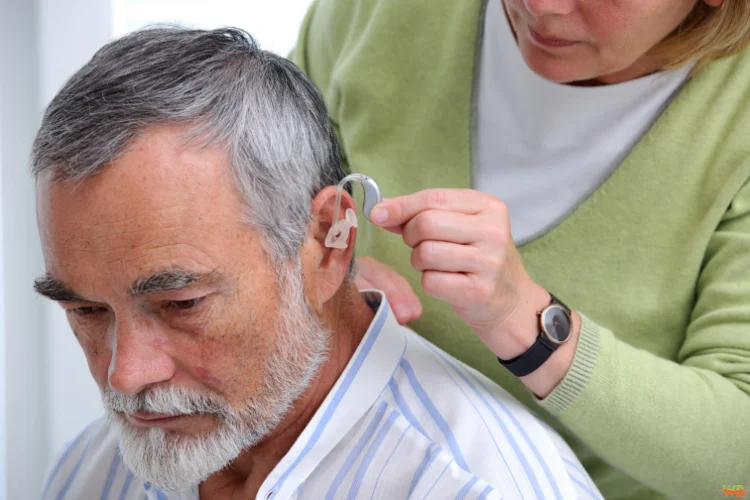While hearing is such a great way to communicate with and learn about the world around us, a lot of people battle through various obstacles that potentially could affect this important sense. The many causes—loud noises, infections, and aging—are usually to blame for any developments in hearing issues, whether from external or internal areas. If not treated appropriately, these problems could lead to discomfort or permanent hearing damage. Thankfully, identifying the root causes helps you take effective steps to safeguard your hearing. The following article outlines some of the common triggers that can cause hearing issues and shares practical tips to avoid them for healthy ears.
Noise Exposure
Continuous exposure to loud noise is one of the major causes of hearing loss, both temporary and permanent. In noisy situations, such as concerts, construction areas, or noisy sports events, excessive sound levels can easily damage the hair cells in the inner ear, which are responsible for hearing. Headphones or earbuds playing at loud volumes for more continuous time without any rest for the ears raise the risk even further. Damages due to NIHL are irreversible; besides leading to difficulties in the comprehension of speech, one major symptom is tinnitus – the constant ringing in the ears – causing an overall decrease in quality of life.
How to Prevent This
Safeguarding your ears from damaging noise levels is crucial. Follow these practical steps to minimize the risk:
- Wear ear protection: Use earplugs or earmuffs in noisy environments like concerts or workplaces.
- Limit volume levels: Observe the 60/60 rule, which states that audio and music should not be played at higher volume levels than 60% for longer than 60 minutes at a time.
- Take sound breaks: After being exposed to loud noises, give your ears time to heal.
- Invest in noise-canceling headphones: These reduce the need to increase volume in noisy settings.
- Be mindful of workplace noise: Ensure your employer provides proper hearing protection if you work in loud conditions.
Cold Weather and Environmental Factors
Cold weather and environmental conditions sometimes contribute to health problems of the ears, potentially causing issues in hearing ability or increasing the severity of an already existing one. During cold seasons, the body naturally diverts blood flow from extremities, including the ears, for the maintenance of core warmth. Reduced circulation makes the ears prone to infections, inflammation, or conditions such as cold weather tinnitus. Sudden changes in temperature, such as going from a heated room to icy air, can cause discomfort, earaches, or even temporary hearing loss. Wind and moisture also make outer ear infections more likely if proper protection of the ears is not used.
How to Prevent Hearing Issues
Protect your ears against the cold and environmental hazards using the following tips:
- Wear ear protection: either earmuffs or hats, or headbands that fully cover the ears when outside in cold weather.
- Keep the ears dry: snow and sweat can invite infection; after exposure, ears should be dried off carefully.
- Avoid sudden extreme changes in temperature: when outside from a hot environment into a very cold one or vice versa, gradually acclimatize yourself.
- Hydrate: Proper hydration supports blood flow, which may reduce vulnerability to cold-related hearing issues.
- Avoid the wind: Long exposure to wind will irritate the outer ear; wear earplugs or other wind-blocking accessories as needed.
Poor Ear Hygiene and Hearing Issues
How to Avoid It
Prevention relies on keeping good ear hygiene. Follow these tips to keep your ears protected:
- Avoid using cotton swabs as they may damage the ear canal or force the wax deeper into the ear.
- One safe means of loosening and removing excessive wax is by the use of earwax softening drops. If you suspect that you have built up some ear wax, it would be better to consult your health professional rather than trying to remove it on your own.
- Dry the ears: After taking a bath or swimming, carefully pat dry your ears to prevent water-related infections.
- Avoid inserting foreign bodies: Even small objects like bobby pins or even earphones should not be used inside the ears for cleaning purposes.
Age-Related Hearing Loss and Hearing Issues
Presbycusis, also known as age-related hearing loss, is a gradual but inevitable process of aging and is considered one of the major causes of hearing issues. It generally starts with subtle changes and then advances, affecting both ears symmetrically. With time, these changes in the inner ear—that is, the deterioration of sensory hair cells and neural pathways—lead to a decline in the ability to hear high-frequency sounds, making In noisy environments, it gets increasingly more difficult to follow conversations.
Contributory factors include genetic predisposition, lifetime exposure to loud noises, and various health conditions such as diabetes and cardiovascular diseases, all of which can hasten the onset and progression of the condition. When not treated, presbycusis strongly affects the ability to communicate; it leads to stressful social relations, isolation, and deterioration in mental health and the overall quality of life. The early signs thus need to be recognized for timely intervention that can reduce its impact and preserve an appropriate quality of life.
How to Prevent or Manage This
Although age-related hearing loss cannot be completely prevented, the following measures can prevent its rapid progression and help with its management:
- Schedule regular hearing checks: The earlier the diagnosis, the sooner interventions such as hearing aids or life adjustments can be made.
- Protect your hearing throughout life: Limit exposure to loud sounds and use ear protection to reduce cumulative damage.
- Maintain a healthy lifestyle: Exercise regularly, eat a balanced diet, and manage chronic conditions like diabetes and high blood pressure to support ear health.
Consider using hearing aids or assistive devices to improve sound clarity, adding convenience and confidence to the clarity of conversations.

I’m Salman Khayam, founder of Wellbeing Junction. I synthesize trusted information from research and expert guidance to create clear articles across health, wellness, and lifestyle topics.
Disclaimer: Content is for informational purposes only and is not medical advice. Consult a qualified expert regarding personal health or specialized questions.




